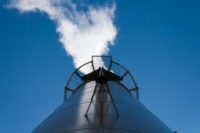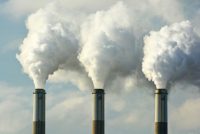On September 15, 2016, the Senate passed S. 2848, the Water Resources Development Act of 2016 (WRDA), by a vote of 95 to 3. While a great deal of the bill is directed at improving the ability of the U.S. Army Corps of Engineers to undertake navigation, flood management, and ecosystem restoration projects, the bill […]
In response to two petitions for reconsideration from industry and one from an environmental group, the EPA has again amended its March 2011 National Emissions Standards for Hazardous Air Pollutants (NESHAP) for area source industrial, commercial, and institutional boilers. The petitions specifically addressed aspects of previous amendments to the NESHAP, which the Agency promulgated in […]
At the most recent 2016 StormCon conference, thousands of stormwater enthusiasts infiltrated the city of Indianapolis eager to learn the tricks of the trade. Stormwater professionals from construction, industry, and municipalities all sought information on how to better their respective stormwater programs and to teach others the hard lessons learned.
Subsurface areas such as basements are hidden harbors for silent and toxic intrusion of vapors that can lead to detrimental health effects. The Environmental Protection Agency has always had an interest in vapor intrusion, but now, rousing recent interest the agency has made a stark move. It has proposed to add vapor intrusion as a […]
Q. If we have an independent contractor come to our facility for 60 days each year with a 4000-gallon diesel tank, will we need to add their tank to our plan or have them develop a plan? What options do we have for secondary containment for mobile tanks?
Eight environmental and public health groups have petitioned the U.S. Court of Appeals for the 9th Circuit to order the EPA to update the federal dust-lead hazard standards and the definition of lead-based paint under the Toxic Substances Control Act (TSCA).
On September 3, 2016, the United States and China, the world’s top two emitters of greenhouse gases (GHGs), formally joined the December 2015 Paris Agreement to reduce emissions and take other actions to stem the advance of climate change. The two nations promptly urged other nations to follow their lead. The agreement enters into force […]
Eight environmental and public health groups have petitioned the U.S. Court of Appeals for the 9th Circuit to order the EPA to update the federal dust-lead hazard standards and the definition of lead-based paint under the Toxic Substances Control Act (TSCA).
Q. Why are “process” tanks like hydraulic reservoirs considered as storage in the calculations?
More than 20 years after first issuing rules governing the process by which parties can petition the EPA to consider possible Clean Air Act (CAA) infractions contained in Title V operating permits, the Agency is proposing a new set of requirements pertaining to such petitions and the overall petition process. The stated intent of the […]










